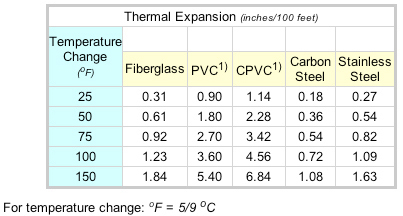
HOW CPVC GOT ITS START
CPVC was invented in the 1950s and developed as an alternative to copper for water lines for residential, commercial, and industrial use. Soon after, it replaced polyvinyl chloride (PVC) for venting high-efficiency residential furnaces. CPVC became ULC636 listed according to requirements in Canada in August 2007.The primary reason CPVC is used in boiler venting instead of stainless steel is lower material costs - up to 20 percent in some cases. CPVC also is lightweight, easy to assemble, and corrosion resistant.
PERFORMANCE LIMITATIONS
Although CPVC is not UL 1738 listed (Underwriters Laboratory category that specifies requirements for condensing boiler flues in the United States), it is being used more and more frequently to vent Category IV high-efficiency boilers. Engineers and contractors should be aware of the potential challenges installers and building owners may face when CPVC is specified instead of AL29-4C stainless steel.CPVC is recommended up to 180°F maximum temperature while stainless steel is rated up to 550°. Typically, high-efficiency boilers generate temperatures in excess of 240°. Since CPVC is not rated to perform at those temperatures, it can significantly limit boiler performance during high demand situations - even causing system limit lock out.
Because CPVC is typically field fitted, there is an increased risk that the system won’t draft or drain condensation properly. The highly corrosive condensation can cause major damage to the boiler and significantly impact its operational life. Stainless steel systems are designed in-house to fit properly and avoid these potential risks.
The majority of boiler manufacturers do not approve CPVC for venting systems while all manufacturers approve AL29-4C UL 1738 listed stainless steel. If CPVC is used, the boiler warranty is compromised, in some cases voided, and repair and replacement costs become the responsibility of the building owner.

1) Note the relatively large thermal expansion of PVC and CPVC compared to stainless steel.
SAFETY AND DURABILITY ISSUES
Other characteristics of CPVC can actually impact the safety of the venting system. For example, CPVC is subject to melting and it becomes viscous at 365°. This is a real concern when trying to seal a system that is venting carbon monoxide. The melted pipe could collapse and not allow flue gas to escape, endangering building occupants.The composition of CPVC doesn’t allow for thermal expansion. This increases the potential for cracking and failed joints when boilers are operating at the higher temperatures within normal operating ranges. CPVC will expand 4 in. per 100 ft. at 100° while stainless steel only expands ½ in. per 100 ft. at 100°. Further, CPVC is only available in single wall and can’t be insulated to UL standards, making it prone to freezing and cracking when mounted on the outside of a building.
Finally, CPVC isn’t tested to the rigorous UL standards required for 1738 listed stainless steel venting material. For example, a UL windload test on joints fulfills seismic testing requirements for stainless steel; CPVC could potentially crack in an earthquake or if subjected to high winds.
INSTALLATION CHALLENGES
Since CPVC vents aren’t regulated, the manufacturer doesn’t have to provide installation instructions, a requirement that is mandated by UL for 1738 listed vents. This puts the burden of proper installation on the shoulders of contracted field personnel, increasing the chance for errors. Most stainless steel venting manufacturers will offer assistance in vent sizing and provide detailed installation drawings per UL and NFPA requirements.Unlike stainless steel vents that are shipped as complete systems, CPVC vent manufacturers typically don’t supply supports for vertical or horizontal installation. Installers must design and construct their own without any requirement guidelines.
CPVC has diameter limitations, readily available only to 4 in. diameter and special ordered to 10 in. diameter. If a customer wants to reduce costs and/or save space, there is no option to use larger pipes to vent multiple boilers; each boiler would have to be vented independently. Because stainless steel vents are available in diameters up to 48 in., a customer can benefit from cost and space savings by venting multiple boilers from one section.
The only part offerings available in CPVC are long straight lengths to be field cut to proper dimensions and a select amount of standard fittings. No custom fittings are available because a one-of-a-kind mold would have to be made, which is typically not a cost-effective alternative. Most stainless steel vent manufactures can customize fittings to meet the customer’s specifications.
Inspection requirements present another installation challenge if CPVC is used instead of stainless steel. The first 3 ft. of CPVC venting has to be installed so that it is readily accessible for inspection. UL 1738 stainless steel has the UL stamp clearly displayed, indicating that it is approved venting material.
CHOOSE STAINLESS STEEL FOR THE LONG HAUL
While CPVC reduces costs up front, stainless steel clearly provides long term advantages that those specifying venting systems should consider.Publication date:02/07/2011

Report Abusive Comment